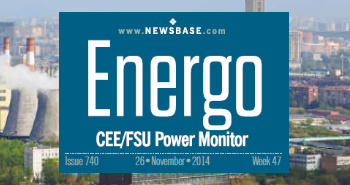Commercial fusion reactors breakthrough expected in 2024

A breakthrough in producing power by fusion reactions is expected in 2024, according to S&P Global.
The ground-breaking technology produces nuclear power without the disadvantages of producing large amounts of radioactive waste as a by-product and can potentially generate far more energy than conventional fission reactions, by using the same nuclear process that drives the sun.
Currently Russia’s VVER nuclear power technology is the world leader and Russia’s nuclear exports are booming, but this is traditional fission reactor technology.
The technical challenge has been to recreate those conditions on earth where a fusion reaction produces more energy than is needed to cause the reaction in the first place – a challenge that has so far eluded scientists. However, researchers in the US are nearly at that point, S&P Global reports.
The commercialisation of fusion-based power plants could appear in 2024 as Washington-based company Helion reports its prototype Polaris reactor could go online with a net positive energy output by mid-year.
Led by Sam Altman, CEO of OpenAI, Helion is considered a frontrunner in the race for cost-effective commercial fusion power. The company attracted substantial capital investment in 2021, raising $500mn, with an additional commitment of $1.7bn contingent on meeting key performance targets.
Helion is utilising the capital to complete the construction of its Polaris seventh-generation fusion generator, with plans for assembly completion by mid-2024.
David Kirtley, founder and CEO of Helion, expressed confidence in reaching net-positive energy production, adding that fusion is the zero-carbon energy source urgently needed to solve the Climate Crisis challenge. Helion's pulsed non-ignition fusion technology, perfected through six generations of prototypes, is poised to generate low-cost, 24/7 power, providing the badly needed clean baseload power supply to complement renewable energy production.
The power sector's transition to lower carbon resources has spurred investment in fusion technologies, with the global demand for power expected to double by 2050. Fusion power plants, alongside hydrogen and energy storage, is envisioned as a crucial component for supporting intermittent renewables like wind and solar.
Helion has already secured a power purchase agreement (PPA) with Microsoft to supply baseload power to its campus and data centres from 2028 onwards. The company's aggressive targets have positioned it at the forefront of fusion development, with competition from other players like Commonwealth Fusion, pursuing similar low-cost fusion designs.
Commonwealth Fusion, backed by nearly $2bn in private investment capital, aims to achieve commercially relevant net energy from fusion with its SPARC prototype reactor, being developed by US university Massachusetts Institute of Technology’s Plasma Science and Fusion Centre, by 2025.
The race toward fusion's commercial viability has garnered support from US climate envoy John Kerry and regulatory advancements, with the US Nuclear Regulatory Commission working on regulations under a less-stringent framework due to fusion's lower environmental impact compared to traditional fission power plants.



Follow us online